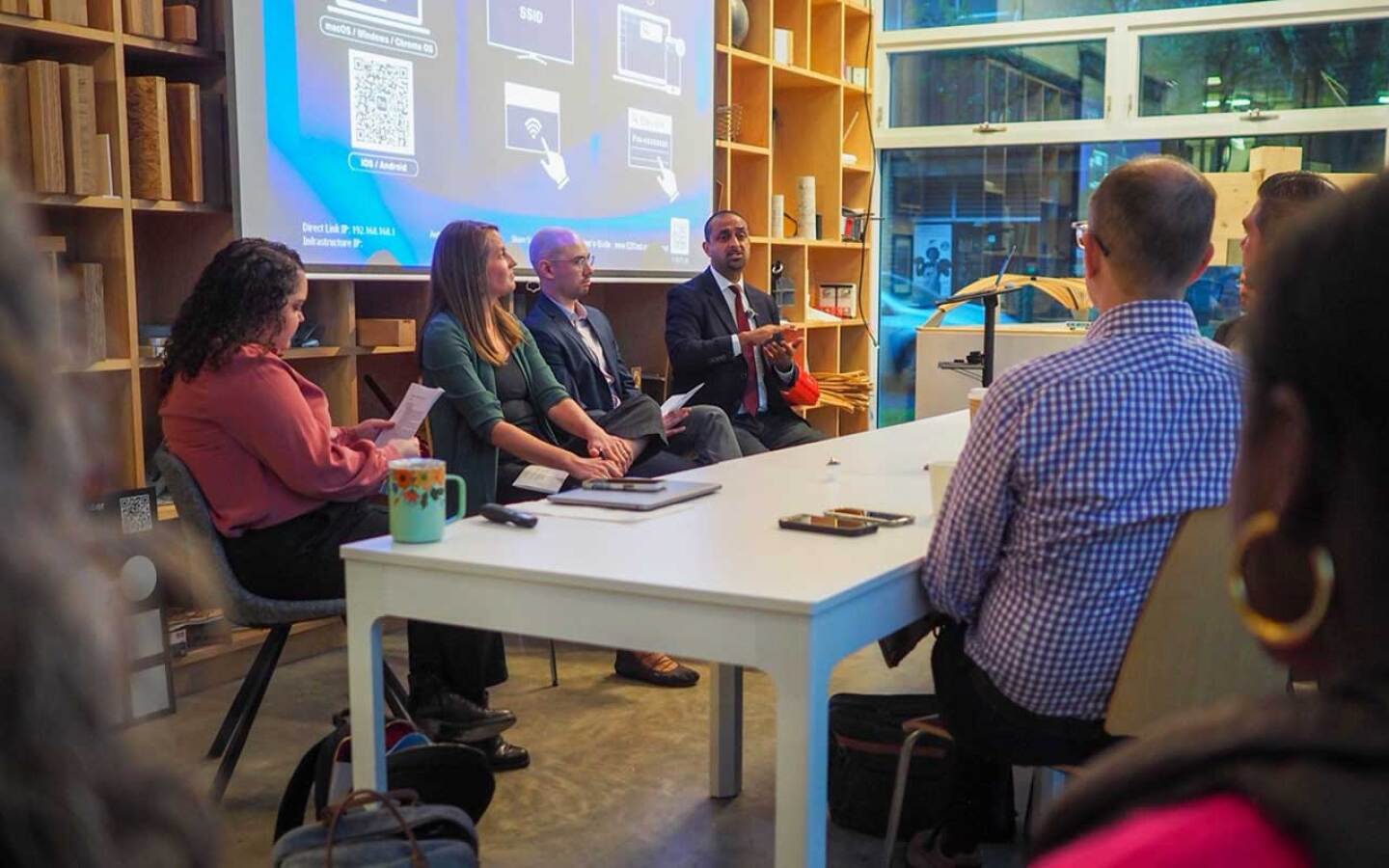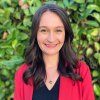The ULI Health Leaders Network is a global learning and leadership development program for land use and real estate professionals advancing health and social equity through the built environment.
In September, this year’s Health Leaders cohort met in Vancouver, British Columbia, for their Fall Forum to connect with one another and learn about how the city is advancing health and equity through recent developments and initiatives in the built environment.
Interested in becoming the next Health Leader? ULI is now recruiting for the eighth cohort. Apply by November 18, 2024, at uli.org/healthleaders.
Repeatedly ranked as one of the most livable cities in the world, Vancouver, British Columbia, provided a dynamic setting for this year’s ULI Health Leaders Network Fall Forum. Over the course of four days, the Health Leaders met with local practitioners, toured recent developments, and reflected on the city’s opportunities—as well as its challenges—through the lenses of health and equity.
Home to almost 700,000 people, Vancouver is known for its gleaming residential towers, striking natural beauty, and dense development. However, like many progressive urban centers on the west coast, it has also struggled with significant issues that threaten the quality of life for its residents, including persistent homelessness and lack of affordability.
This contrast and complexity framed many conversations as the Health Leaders learned from the people and projects that are addressing the city’s most pressing problems. Several key themes emerged throughout the week, including the importance of innovative partnerships, authentic engagement, planning for the future, and living in community, inspiring the Health Leaders to consider the role they play in advancing better outcomes in their own cities.
A New Vancouverism
The first day of the forum grounded the cohort in the concept of “Vancouverism,” an urban planning philosophy popularized in the late 1980s that describes the city’s dense, mixed-use development, accessible public realm, and breathtaking views.
Health Leader Shabbar Sagarwala, an architect and urbanist who lived in Vancouver earlier in his career, reflected on the phenomenon, noting, “Vancouver’s success in creating a mixed-use city that boasts high-density housing cheek by jowl with commercial towers, public parks, schools, and urban amenities has made it a magnet for newcomers from around Canada and the world.”
Yet presenter Lance Berelowitz, a long-time Vancouver-based planner, urban designer, and author, contrasted Vancouverism’s ideals with some of the realities of the city today, noting that there’s much more work ahead to ensure all can benefit as the city continues to grow.
Later that day, a presentation and afternoon walking tour led by the local leaders of DIALOG, an architecture and planning firm with offices across Canada and in San Francisco, helped bring Vancouverism to life. Firm partner and Vancouver Studio Chair Vance Harris shared some of the company’s past and current work, including high-rise residential towers such as Vancouver House and DIALOG’s pioneering research on mass timber.
The day concluded with a visit to sθәqәlxenәm | ts’exwts’áxwi7 (Rainbow Park), a former parking lot turned community gathering place in the heart of downtown. The name for the park was gifted by the Musqueam, Squamish, and Tsleil-Waututh Nations, who are the original inhabitants of the unceded land now known as the city of Vancouver.
The DIALOG team highlighted that partnerships with the city, local residents, and First Nations were critical to the success of the project. With its inclusive playground and First Nations–inspired art, the park demonstrates the importance of creative collaboration for meeting the needs of the community. Projects like Rainbow Park indicate that a new Vancouverism might be emerging, one founded on partnerships, cultural heritage, and shared aspirations for a more equitable city.
Planning Seven Generations Ahead
The next day’s programming expanded on these themes with a visit to Granville Island. Once a thriving industrial area, the neighborhood is now home to the world-famous Granville Island Public Market, which attracts some 10.5 million visitors each year.
A panel discussion included speakers Joost Bakker, a partner at DIALOG; Tom Lancaster, the general manager of Granville Island; and Lolly Bennett, member of the Granville Island Council. Their conversation explored the past, present, and future of the island and the work being done to ensure it remains a cherished destination long into the future.
In the afternoon, the cohort learned about the groundbreaking developments led by the Musqueam Indian Band, the Squamish Nation, and the Tsleil-Waututh Nation (MST). The session opened with an Indigenous welcome song and drum performance, grounding the discussion in the rich culture of the First Nations.
Through their shared development company, the MST Development Corporation, the three First Nations have purchased land back from the Canadian government and are developing large, mixed-use projects across the city. The cohort learned about Jericho and Heather Lands, two projects that demonstrate First Nations culture and values while delivering much-needed affordable housing to the region.
Michelle Bryant-Gravelle, senior director for Indigenous relations at the city of Vancouver, led a panel discussion that included Matt Shillito, director of special projects and interim planning director for the city, and Sxelátennaat-Adrienne Charlie, a cultural liaison for the Squamish Nation. The three speakers talked about the trust- and relationship-building work that had to take place for the city and First Nations to work together collaboratively on the developments.
“Seeing the city partner directly with the Musqueam, Squamish, and Tsleil-Waututh communities was a powerful example of reconciliation in action,” said Maria Katticaran, a Health Leader who works at design firm HDR in San Francisco. “It highlighted how development projects can respect and incorporate Indigenous heritage and values. This approach not only enriches the cultural fabric of the city but also sets a remarkable example for inclusive development.”
At the heart of the First Nations’ approach to their developments is an ethos of planning not just for the next generation, but seven generations into the future. This type of perspective will be critical as the metro Vancouver region prepares to welcome nearly 2 million more residents by 2050.
The cohort learned about the city’s and province’s current initiatives to address this anticipated growth, including a massive expansion to the SkyTrain network, plans for transit-oriented development in the Broadway neighborhood, and policies aimed at cutting red tape to speed up the delivery of affordable housing. A conversation with Honorable Ravi Kahlon, the British Columbia Minister of Housing; Christine Boyle, a member of the Vancouver city council; and Chris Mah, a planner for the city, explored how these plans are working together to ensure the region remains livable and affordable for current residents as well as newcomers.
Behind the planning efforts and the work of the First Nations is a focus on community and an optimism about the future. “[This ethos] struck me as a much more ‘human’ and hopeful way to think about life-cycle costs, sustainability, and resilience,” said Kelsey Oesmann Wilson, a Health Leader and affordable housing developer based in Nashville. “Although the challenges we face in housing, health, and climate change are immense and complex, the solutions often happen one project, one policy, and one partnership at a time, when we bring our unique skills and perspectives to the table.”

A panel discussion with Beth Nilsson (ULI), Christine Boyle (Vancouver City Council), Chris Mah (City of Vancouver), and Ravi Kahlon (Minister of Housing for British Columbia) explored connections between the SkyTrain expansion, Broadway Plan, and Homes for People provincial policy.
(Victoria Oestreich/ULI)
Strength in Community
The cohort also toured Our Urban Village (OUV), a 12-unit cohousing project in a residential neighborhood south of downtown. Often defined as an “intentional community,” cohousing emphasizes shared space and shared values, with residents actively participating in the design, development, and operation of their housing. At OUV, residents live in one of the building’s 12 individual and family units, with an additional communal living area to gather for meals and activities on a weekly basis.
OUV is unique among cohousing projects because it was built by a developer. In most cohousing projects, the future residents oversee all aspects of the building’s design and development. This can be a complicated endeavor in an expensive and heavily regulated market like Vancouver. OUV’s model, called “cohousing lite,” offers a new, easier approach to the traditional process while still delivering on the key benefits of cohousing.
OUV residents partnered with community-minded developer Tomo Spaces, architect MA+HG, and research consultant Happy Cities to bring this unique project to life.
A panel discussion explored how cohousing could be a part of the solution for the city’s affordability crisis while also alleviating the isolation often experienced by urban dwellers. Research indicates that people who live in communities like Our Urban Village report being healthier, happier, and less lonely.
“In an era where ‘more is more,’ [this project] takes the overwhelming scale of the city and makes it legible, manageable, and inviting,” observed Brice Maryman, a Health Leader and landscape architect based in Seattle.
On a walking tour of Vancouver’s Chinatown the following day, the Health Leaders were again reminded of the importance of community. While touring, the cohort learned of the fraternal societies that helped turn-of-the-century Cantonese immigrants find their footing after arriving in Canada. The historic society buildings that remain have become de facto community centers, providing space for people to meet friends, watch TV, or play mah-jongg. The societies are primarily managed and frequented by elders, but efforts are underway to attract younger generations.
Though Our Urban Village and the society houses of Chinatown may not appear to share many similarities, they are both grounded in humankind’s need for belonging and community, observed Vanessa Franyutti, a Health Leader and lawyer who lives in Mexico City. “Therefore, the built environment needs to consider including elements that can strengthen the sense of community for healthier and better lives.”
As the Health Leaders prepared to depart Vancouver, they reflected on the lessons they will bring back to their own cities.
“The forum has challenged me to adopt Vancouver’s forward-thinking mindset while also ensuring that access to healthy, urban living is available for all,” said Health Leader Rhyan Brown, a pediatric nurse practitioner based in Dallas.
For Michael Penner, a Health Leader who works in nonprofit housing finance in Oakland, the biggest takeaway was an appreciation for the community created through the Health Leaders Network.
“The insights gleaned when connecting with Health Leaders in each meal and each break are only possible within a group of such diverse professional backgrounds and with such mutual respect; such is the magic and beauty of the Health Leaders Network.”









